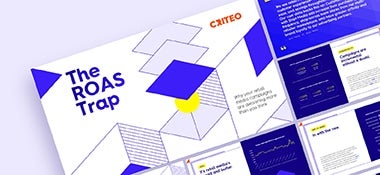App bidding has now become a mainstream strategy for app developers looking to monetize. But as the trend begins to become the industry standard, there are several things app developers should be thinking about for the future.
The same way header bidding became the dominate technique on the web side, so has app bidding in the developer community. With app bidding, developers enjoy more transparency, fair competition, reduced latency, and less manual work to optimize their monetization stack.
Many publishers coming from web have managed to leverage their header bidding expertise for app. As they have become all too familiar with standard waterfall approach and its inefficiencies, they find themselves ahead of the game in making the switch to app bidding. Most of the top app-first players are also leveraging app bidding but have built it initially into a hybrid setup, which mixes a bidding and waterfall strategy.
Now that the app bidding test phase is almost completed and many have made the switch, early adopters have more time to focus on other strategic tasks and key challenges the industry is bringing:
1. Integrating incremental demand partners with more freedom/flexibility
App bidding offers a flexible and time-saving integration that allows developers to spend more time selecting demand partners that will drive incremental revenue to their advertising mix.
In order to efficiently monetize global audiences, developers need to ensure demand is covering their top user geos and offer year-long budgets that can consistently spend on their inventory. Quality of the demand is also important, as this leads to a more personalized ad experience and reduced user fatigue, increasing a user’s overall Lifetime Value (LTV).
Finally, full transparency on CPM bids and user data that is retrieved via app SDKs are key insights that app developers will have to take into account when evaluating the right partners. Leveraging the right SDK partners gives developers access to more premium demand sources with less intermediaries getting in the way.
2. Anticipating the Apple IDFA privacy update
With the iOS 14 update, apps will be required to ask for user consent to share their IDFA. This was expected as the industry has been looking for quite some time to give more transparency and control to users.
While developers and publishers don’t yet know the exact impact that expected opt-out rates will have on their revenue, they understand it could be substantial. Now is the time for them to focus on a plan to better incentivize users to opt-in when given the choice, as well as educate those who plan to opt-out.
As the industry prepares to see the impact from Apple’s policy update, app developers will be looking for partners like Criteo on guidance to help mitigate this risk. This includes the opportunity to partner more closely with industry leaders on developing identification techniques which are not device-centric and help to maintain performances on their iOS inventory.
3. Optimizing a user engagement strategy after COVID
A Criteo survey conducted earlier this year revealed that nearly two-thirds of app users globally (64%) deleted an app between February and June 2020. In the US, 61% deleted an app in the months from February to April, and in Europe, 61% deleted an app in the months from April to June. Across the APAC region, that figure is 69%.1
The relationship between users and apps is currently very fragile because of the increasing risk of user churn publishers are facing. Recent Criteo data also shows us that almost half (49%) of app users globally abandon an app after day one.2 Prioritizing the app experience and building long-term user relationships must be a key priority for developers to optimize their user acquisition investments to drive more installs and reduce uninstalls.
Gaming apps for example have typically relied on gamification via rewarded or playable ads which have proved effective and provide a clear value exchange between free content and advertising. Other tactics like incentives, special discounts, and loyalty programs for top engaged users also provides a positive experience and increases retention across all app environments.
Re-engaging dormant users via ads with quality partners that have plentiful supply will also be key. Access to the top brands and retailers that can contribute to a strong deep linking strategy within apps will help drive more installs and user retention.
The ability the thrive in this changing landscape will take dedication and perseverance from all players in the industry. If developers and publishers can keep the focus on improving the user experience, while providing engaging and relevant content, the apps we love so much will continue to thrive.
1Sources: Criteo Global App Survey, US, April 2020 n=981. Criteo Global App Survey, EMEA, April/May/June n=9,985. Criteo Global App Survey, APAC, April/May/June 2020 n=8,162. Criteo Global App Survey, Worldwide, April/May/June 2020 n=19,111.
2Criteo data from 15 highly active countries from December 5, 2019-January 8, 2020, n=1,091, as cited in The Ultimate Guide to App User Retention.



















